Immersive Training Technical Assistance
The Native Conservancy’s Indigenous Ocean Farmer Immersion program was born from a vision developed by Native Conservancy staff and leadership to listen, learn and respond to invitations from Native leaders to visit their villages and cultural gatherings as we understood that ocean farmers need to begin from a trusted place and to learn experientially.
Since 2019, Native Conservancy worked with and visited numerous Native communities throughout Alaska (even as covid slowed down many in-person gatherings) to connect with hundreds of Native people to address their concerns, fears and interests for kelp farming and mariculture. Our Indigenous Ocean Farmer Immersion program runs all year round, and has assembled experts, cohorts and participants to share practical information and experiences in the water, in the classroom and out in the field. The program is designed for people looking to merge their cultural and traditional experiences with hands-on training intended to be used and modified in real time.
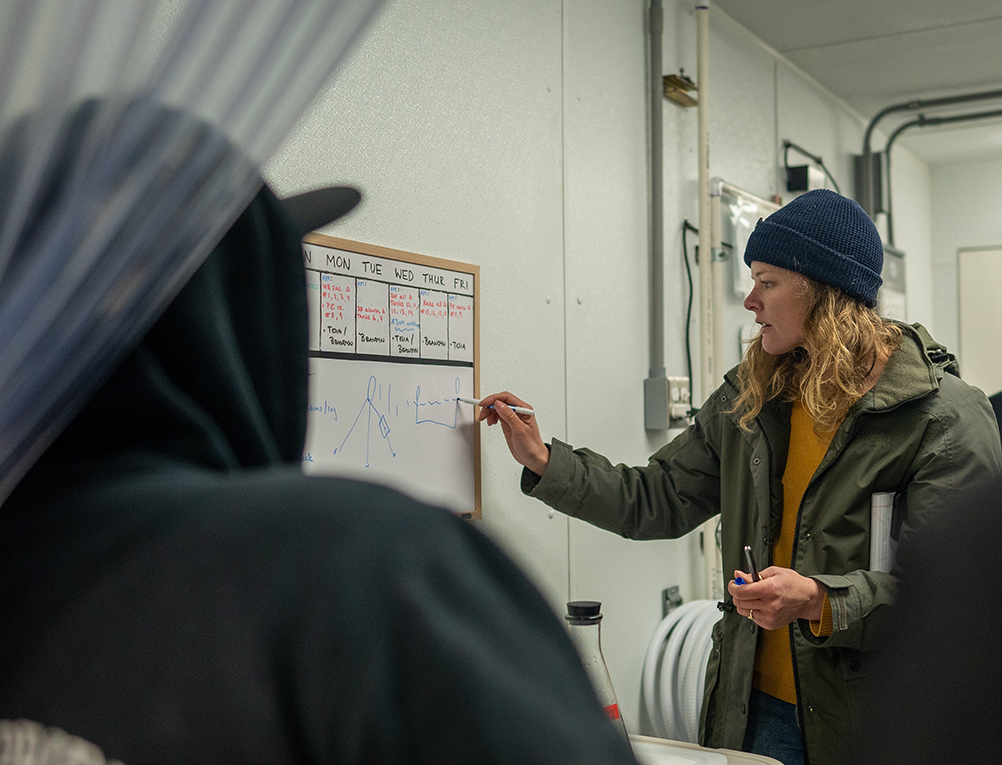 Tesia Bobrycki, Program Director, passing down knowledge to future kelp farmers from within NC's Community Kelp Seed Nursery © Ayşe Gürsöz
Tesia Bobrycki, Program Director, passing down knowledge to future kelp farmers from within NC's Community Kelp Seed Nursery © Ayşe Gürsöz
Kelp Parent Stock Collection
Learning about wild kelp forests, their development and life cycle, is an important element of technical assistance training provided by Native Conservancy. There is a dual focus on successfully harvesting fertile kelp blades that meet state requirements as well as adding to growing research and monitoring of foundational wild beds that are being impacted by warming waters. Aboard Native Conservancy boats, kelp farmers are shown how to source kelp seed and learn kelp seed cultivation methods during field visits where they can see for themselves the realm of ocean variables, tied to the species they plan to grow, state regulations and gathering techniques.
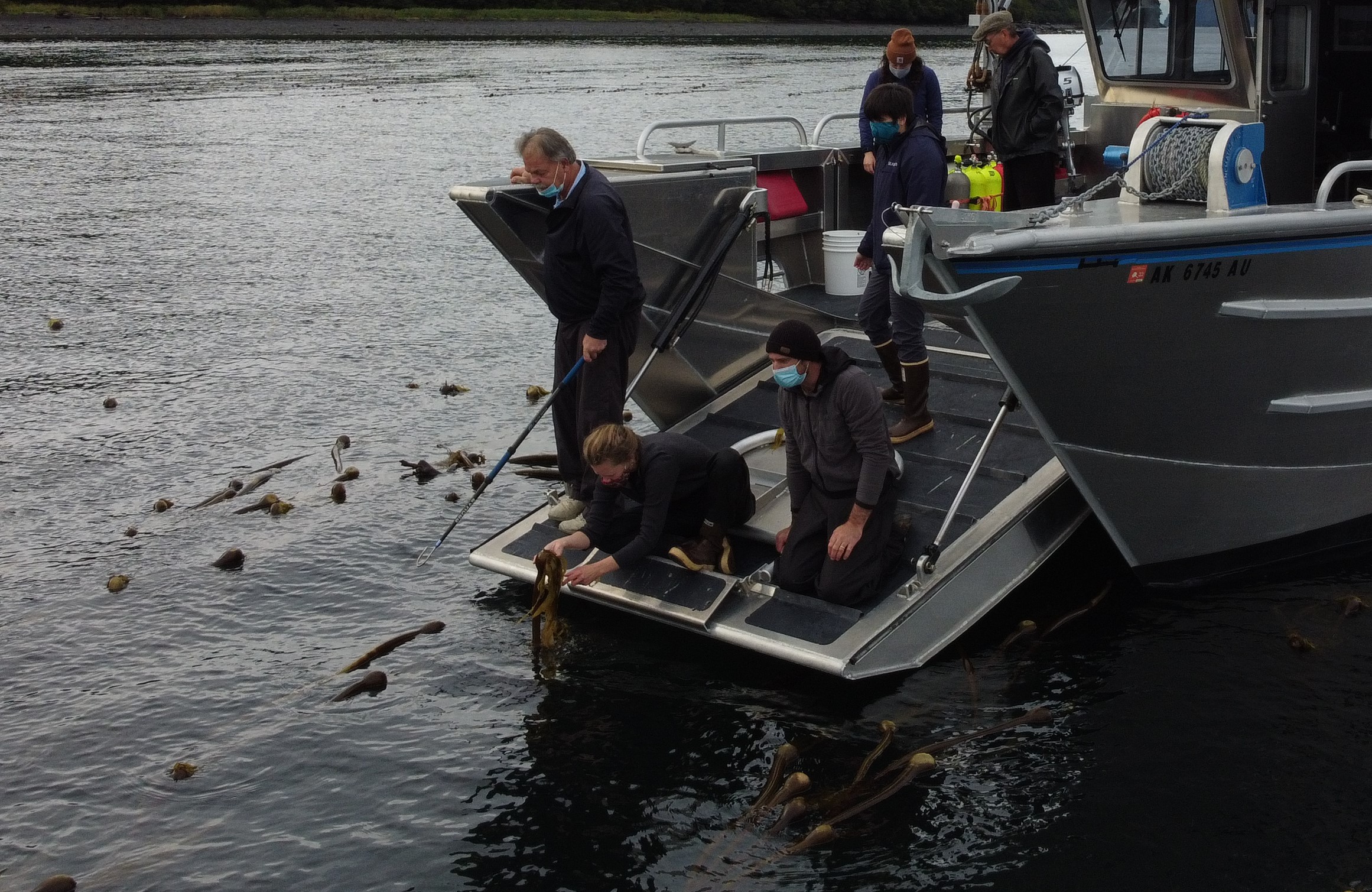 Tesia Bobrycki, Program Director, collecting wild Bull kelp (Nereocystis luetkeana) sorus
Tesia Bobrycki, Program Director, collecting wild Bull kelp (Nereocystis luetkeana) sorus
Outplanting on Ocean Farms
Future Native farmers are particularly delighted to get on the ocean and engage in hands-on experience with Native Conservancy to outplant their kelp seed spools. Native Farmers have shared with NC that this is one of the most exciting immersion, training and ocean experiences they’ve had. Native Conservancy provides a unique opportunity for participants to take this early kelp farmer step, merged with conversations about traditional and customary uses of kelp that Native People have enjoyed for thousands of years. Outplanting kelp seed spools can be an invigorating experience for new kelp farmers as they place kelp in the water on ocean arrays for the very first time, a first step towards the harvest to come. Native Conservancy was the first ever to outplant and successfully grow three (3) different species (Ribbon, Bull and Sugar kelp) in the same year in Prince William Sound and has developed techniques for efficient kelp unspooling on farms and research sites with a manual outplanting device developed using spare parts and revolutionized the process.
Outplanting training consists of evaluating nursery timing, identifying necessary weather conditions, technical methodologies for building and deploying ocean arrays, and hands-on practice transferring kelp babies from nursery to farm. This complex process becomes clear with opportunities to practice and witness the process otherwise only described in pamphlets.
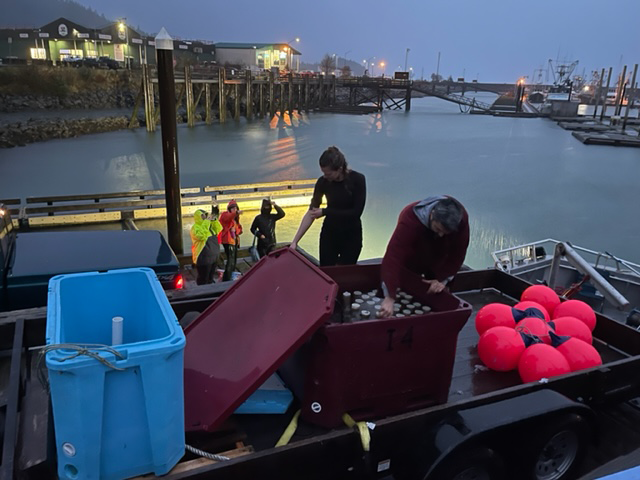 Native Conservancy staff loading kelp seed spools into totes for outplanting © Native Conservancy
Native Conservancy staff loading kelp seed spools into totes for outplanting © Native Conservancy
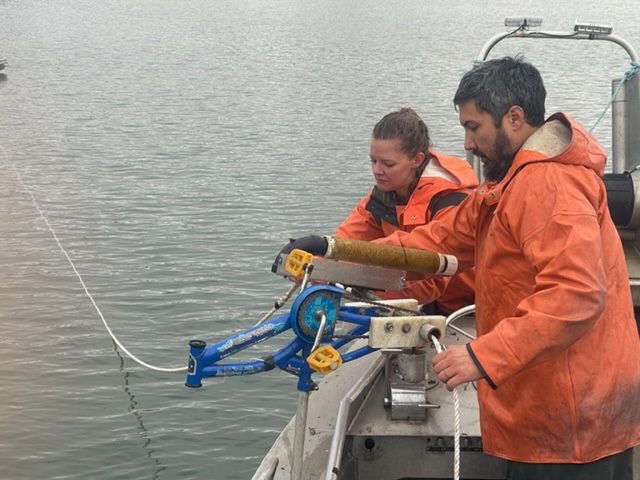 Jim Smith and Tesia Bobrycki, Program Directors, deploying seed spools on “outplantinator" © Native Conservancy
Jim Smith and Tesia Bobrycki, Program Directors, deploying seed spools on “outplantinator" © Native Conservancy
Monitoring Kelp Research Sites, Ocean Farms and Wild Kelp Forests
Kelp Farm monitoring has become a mainstay at Native Conservancy dating back to 2019 when Native Conservancy again made history by deploying the first ever kelp research sites in seven locations throughout Prince William Sound. There are numerous opportunities for these at-sea technical assistance training sessions for participants as kelp monitoring occurs for roughly 6-7 months out of the year. Since 2019, Native Conservancy has worked with Native youth on staff, researchers and future kelp farmers to monitor each of its sites (conducting over 300 kelp site monitoring visits) covering vast ocean terrain and a myriad of ocean environments to inform ideal conditions and practices for growing kelp.
Cohorts and participants work side by side on Native Conservancy boats to learn how to use a YSI meter, deploy and maintain magic (data) buoys, track data, log and share data tied to reporting with their partners, other ocean farmers and researchers. The Native Conservancy’s hands-on kelp monitoring training, and technical assistant work has given researchers (University of Alaska Fairbanks, NOAA, ADF&G, UC San Diego, Alutiiq Pride Marine Institute, and others) and future farmers a front row seat into an extraordinary immersion experience, and what it takes to conduct regular kelp farm and research site monitoring tied to ocean habitat and legal compliance.
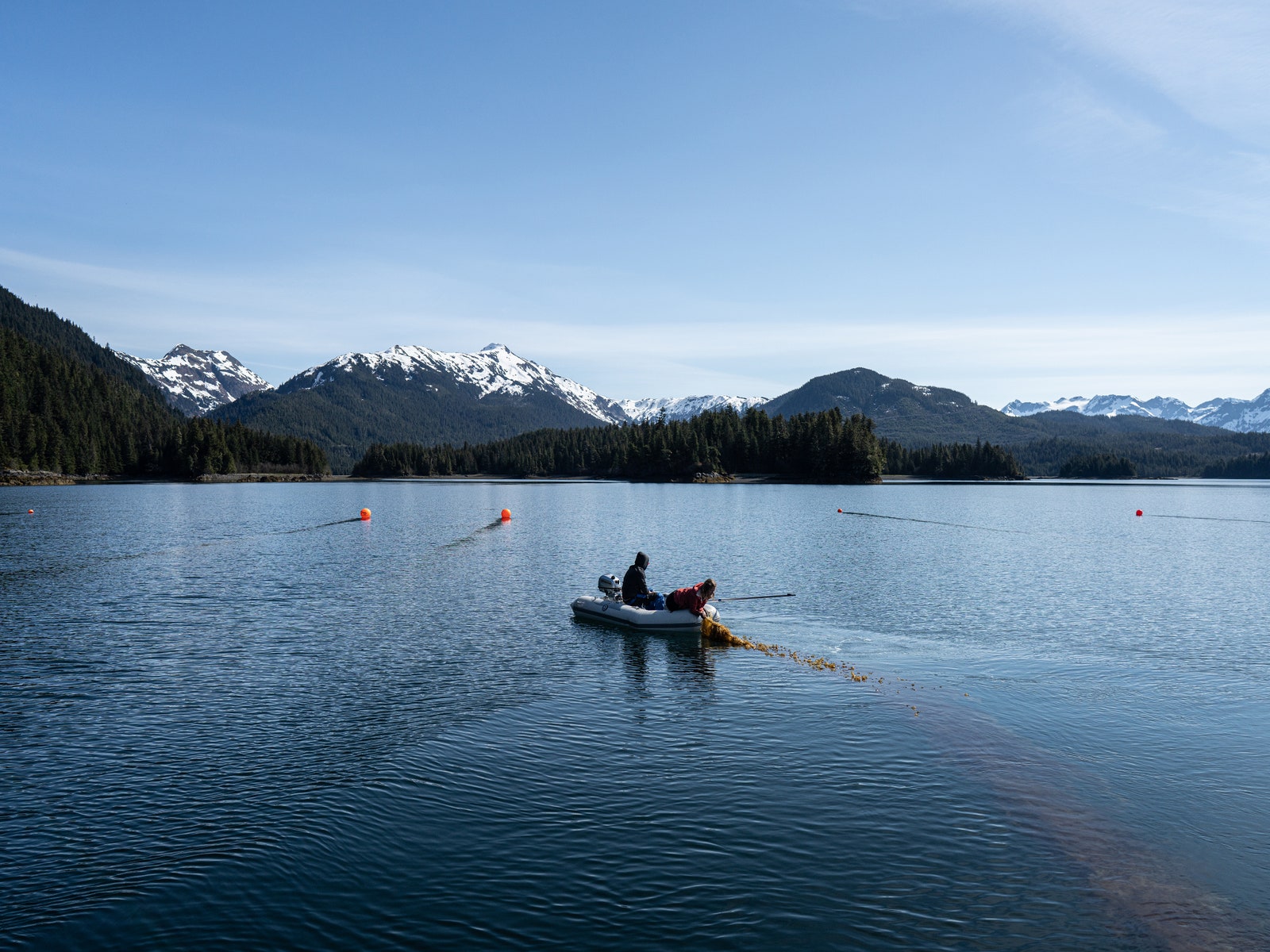 Tesia Bobyrcki, Program Director, and Tyler Quales, Deckhand, collecting tissue samples at one of the Kelp Research test sites in Prince William Sound © Ash Adams
Tesia Bobyrcki, Program Director, and Tyler Quales, Deckhand, collecting tissue samples at one of the Kelp Research test sites in Prince William Sound © Ash Adams
Spring Harvest After a Cold Dark Winter
After a long, cold, dark winter where the kelp has absorbed nutrients it needs to thrive, come April the kelp is ready for harvest as the growing season comes to an end. For this technical assistance program, future Native kelp farmers are engaged with Native Conservancy harvesters to pull up the lines, clean and wash the kelp and get it to the processing facility. Native Conservancy has been fortunate to have numerous kelp sites available for technical research and training whereby farmers can explore and practice a range of skills to maintain quality, wash the kelp properly and get the kelp to a shelf stable state.
Future ocean farmers learn about the impact of weather, vessel harvesting requirements, timing to clean, process and prepare the kelp so that it’s shelf stable: dried, dehydrated, blanched and/or frozen. Native Conservancy has led the way in Alaska with numerous pilot projects to help Native people break down significant barriers-to-entry to processing and other critical milestones such as landscape site analysis, permitting, establishing LLC’s, securing insurance and start-up funding to name a few. Native Conservancy is working with harvesters and processors throughout the state to improve output and move the bar forward to lay the foundation for good blue-green job opportunities.
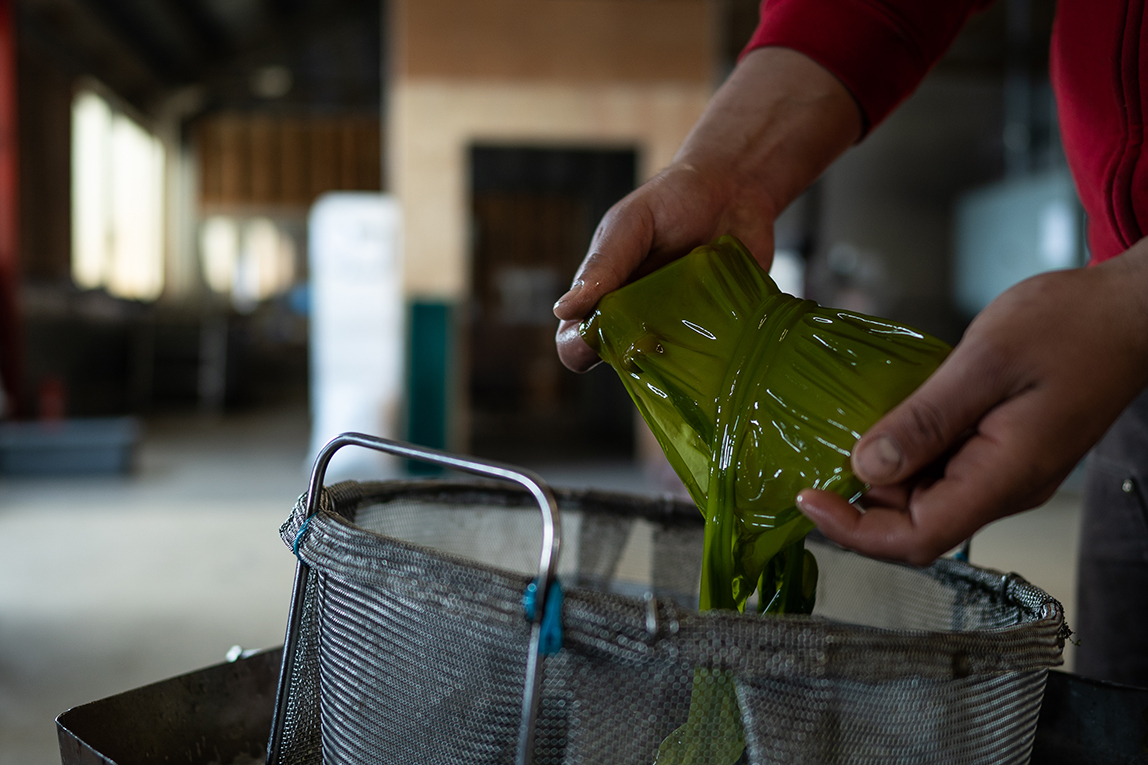 Ribbon Kelp (Alaria marginata) after the blanching process turns the color from an earthy brown to a beautiful green © Ayşe Gürsöz
Ribbon Kelp (Alaria marginata) after the blanching process turns the color from an earthy brown to a beautiful green © Ayşe Gürsöz
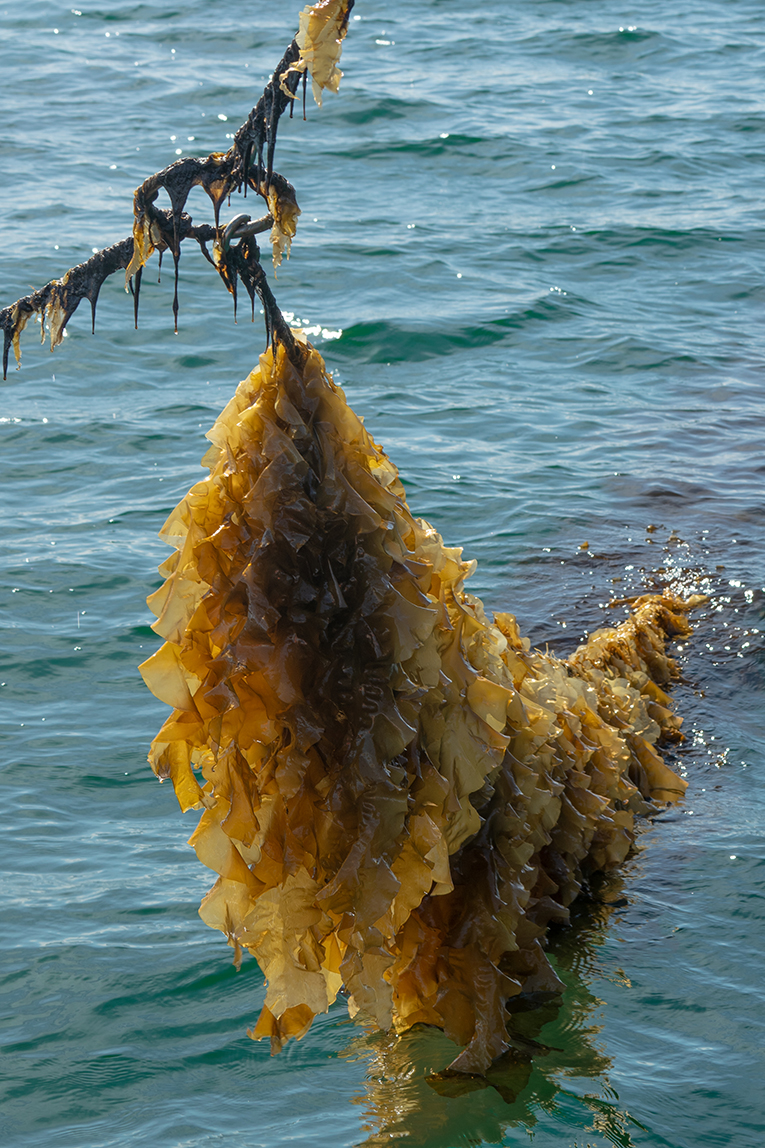 Sugar Kelp (Saccharina latissima) being harvested form one of Native Conservancy’s test sites in Prince William Sound © Ayşe Gürsöz
Sugar Kelp (Saccharina latissima) being harvested form one of Native Conservancy’s test sites in Prince William Sound © Ayşe Gürsöz
Diver Certification and At-Sea Safety Training
Promoting a model of self-sufficiency and investing in skill development, Native Conservancy has pioneered a diver training program in Cordova, AK to offer valuable expertise to Native people for their future kelp farming operations as well as other industry and exploration opportunities. Native Conservancy has completed two cycles of Dive Certification and Safety Training for Native youth and future kelp farmers and is poised now for 2023 to lead another round. Two full cohorts of certified divers have emerged through the Native Conservancy program for 2021/2022 and NC also expanded community engagement citywide in Cordova, inviting the local fire department to participate with NC’s diver and safety preparedness to better outfit future Native ocean farmers.
Native Conservancy has seen a significant rise in interest in participation of this Scuba Diving Certification program led by highly experienced Dive Instructors, so that Native ocean farmers are best equipped to conduct kelp site assessments and kelp seed sourcing, as they forage for wild kelp sori for their ocean farms.
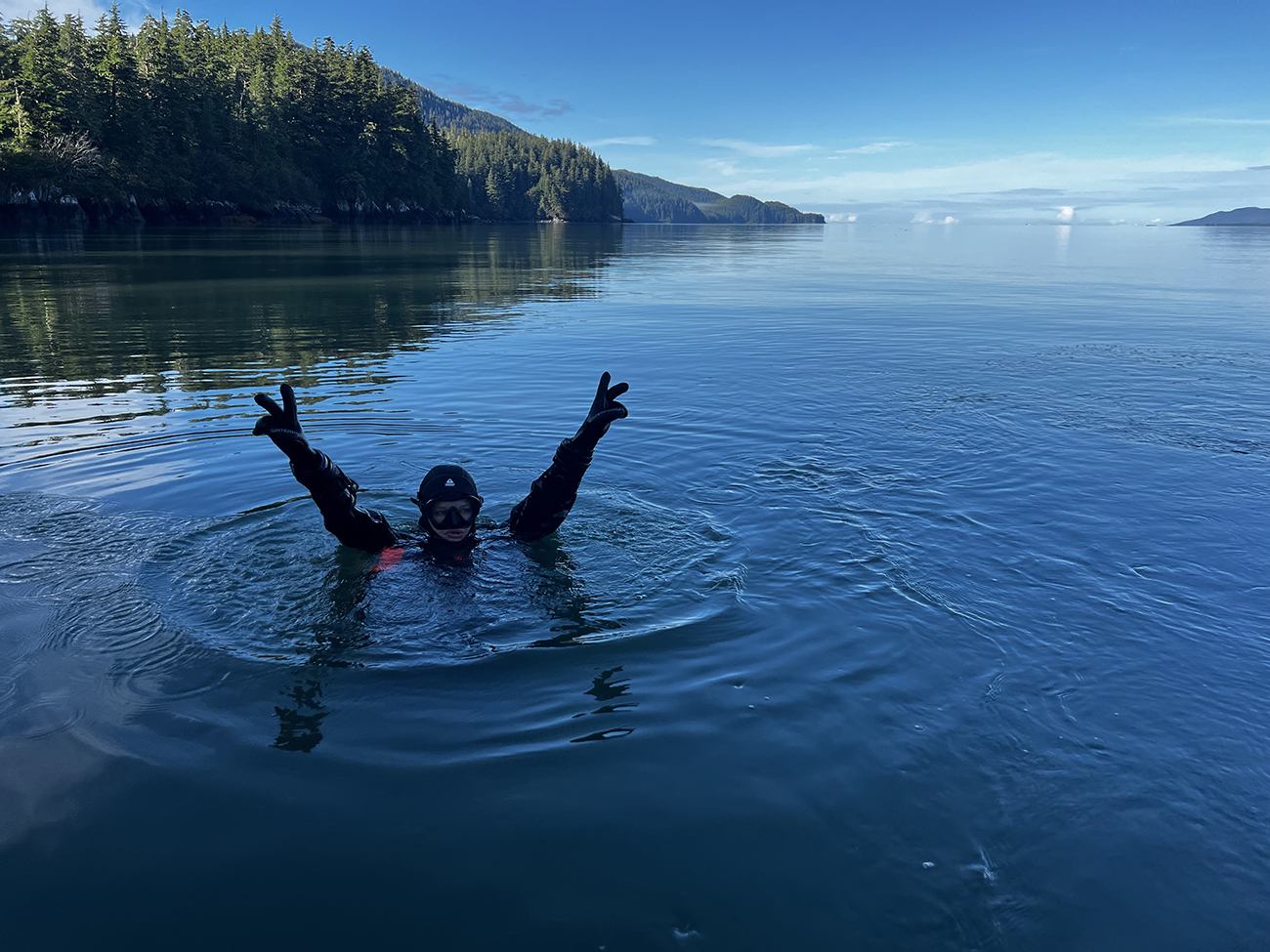 Tesia Bobrycki, Program Director, undergoing Diver Rescue Training alongside open water trainees © Native Conservancy
Tesia Bobrycki, Program Director, undergoing Diver Rescue Training alongside open water trainees © Native Conservancy
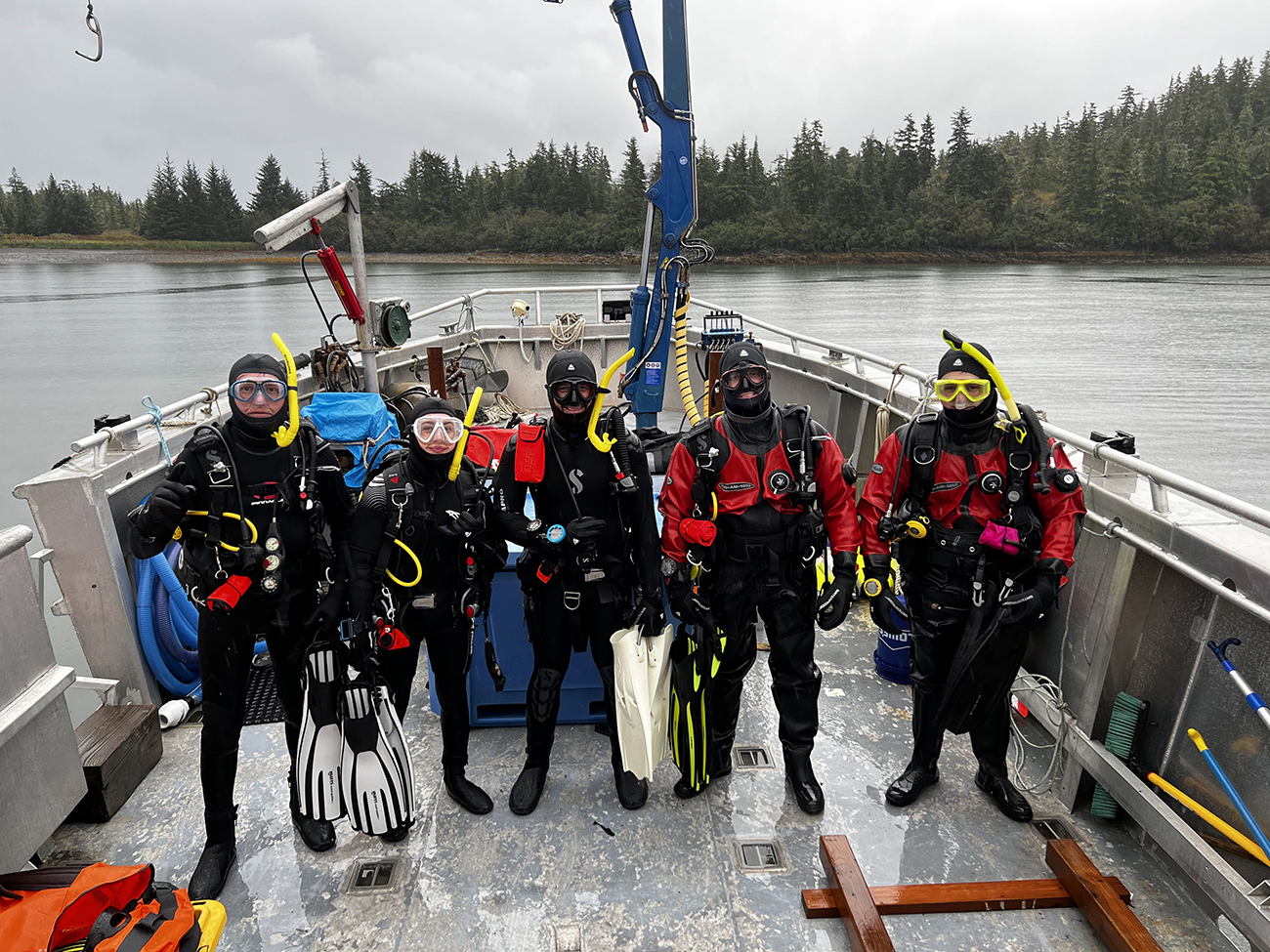 Participants in 2022 Diver Certification Training © Native Conservancy
Participants in 2022 Diver Certification Training © Native Conservancy
Business Planning and Development in Collaboration With Our Partners
Promoting a model of self-sufficiency and investing in skill development, Native Conservancy has pioneered a diver training program in Cordova, AK to offer valuable expertise to Native people for their future kelp farming operations as well as other industry and exploration opportunities. Native Conservancy has completed two cycles of Dive Certification and Safety Training for Native youth and future kelp farmers and is poised now for 2023 to lead another round. Two full cohorts of certified divers have emerged through the Native Conservancy program for 2021/2022 and NC also expanded community engagement citywide in Cordova, inviting the local fire department to participate with NC’s diver and safety preparedness to better outfit future Native ocean farmers.
Native Conservancy has seen a significant rise in interest in participation of this Scuba Diving Certification program led by highly experienced Dive Instructors, so that Native ocean farmers are best equipped to conduct kelp site assessments and kelp seed sourcing, as they forage for wild kelp sori for their ocean farms.
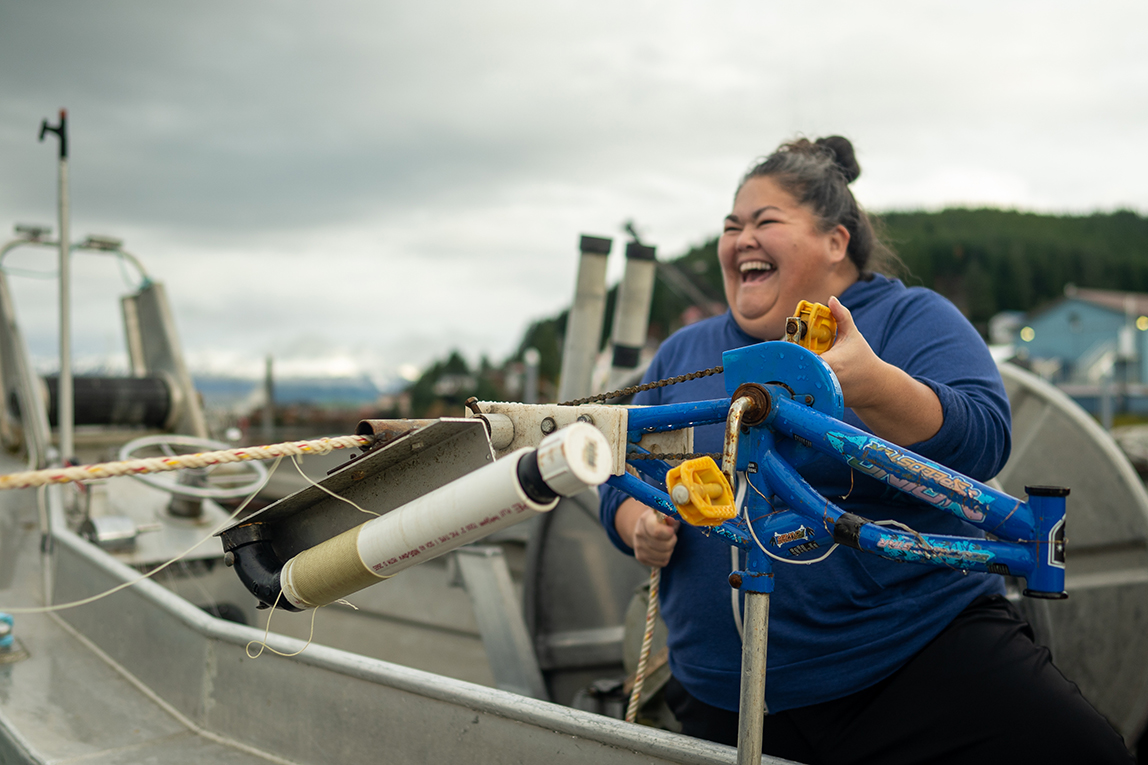 Liz Medicine Crow, Organized Village of Kake, testing NC's "outplantinator" during the Famer Immersion Training Program. © Ayşe Gürsöz
Liz Medicine Crow, Organized Village of Kake, testing NC's "outplantinator" during the Famer Immersion Training Program. © Ayşe Gürsöz
Future Kelp Farm Site Location & Analysis, Permitting and Farm Design
Native Conservancy has built a reputation of trust with Native ocean farmers by providing critical technical assistance when and where it’s needed. One of the first tasks Native Conservancy took in 2018 was to travel 1,500 coastal miles across the Gulf of Alaska, including the Kenai Peninsula and Prince William Sound waters, looking at potential conditions and locations for future kelp farms. Technical Assistance in this category spanned the gamut of critical planning, execution and foundational work for kelp site analysis, permitting, farm design and getting kelp in the water. Native Conservancy is known among Native Communities for its immersion training which has been shared with up to 50 Future Native Kelp Farmers and growing.
Over the last three (3) years, Native Conservancy placed 9 kelp research sites, 1 commercial farm and completed over 15 kelp farm site permit applications, all the while sharing these immersion experiences and training, openly and at our own expense in Southeast, Prince William Sound and Kodiak. In Prince William Sound, the Native Conservancy established kelp mariculture operations across 100 miles of the Sound in the Alaska Native communities of Eyak (Cordova), Tatitlek, Chenega and Qutalleq (Seward) which has allowed us to collate the findings from experiential research, site documentation and monitoring at these sites. The test sites have allowed us to develop processes critical for the deployment of kelp farming operations for future Native ocean farmers.
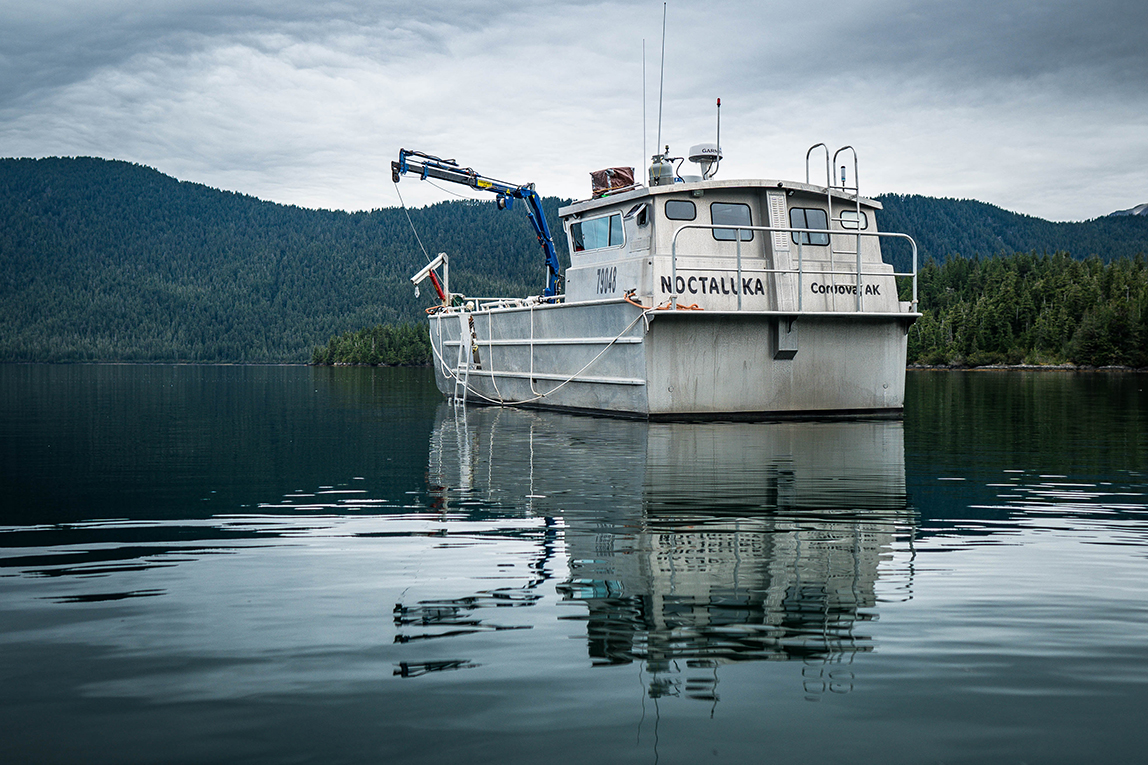 Landscape and site analysis in Prince William Sound and Southeast Alaska with Native Conservancy crew © Ayşe Gürsöz"
Landscape and site analysis in Prince William Sound and Southeast Alaska with Native Conservancy crew © Ayşe Gürsöz"
